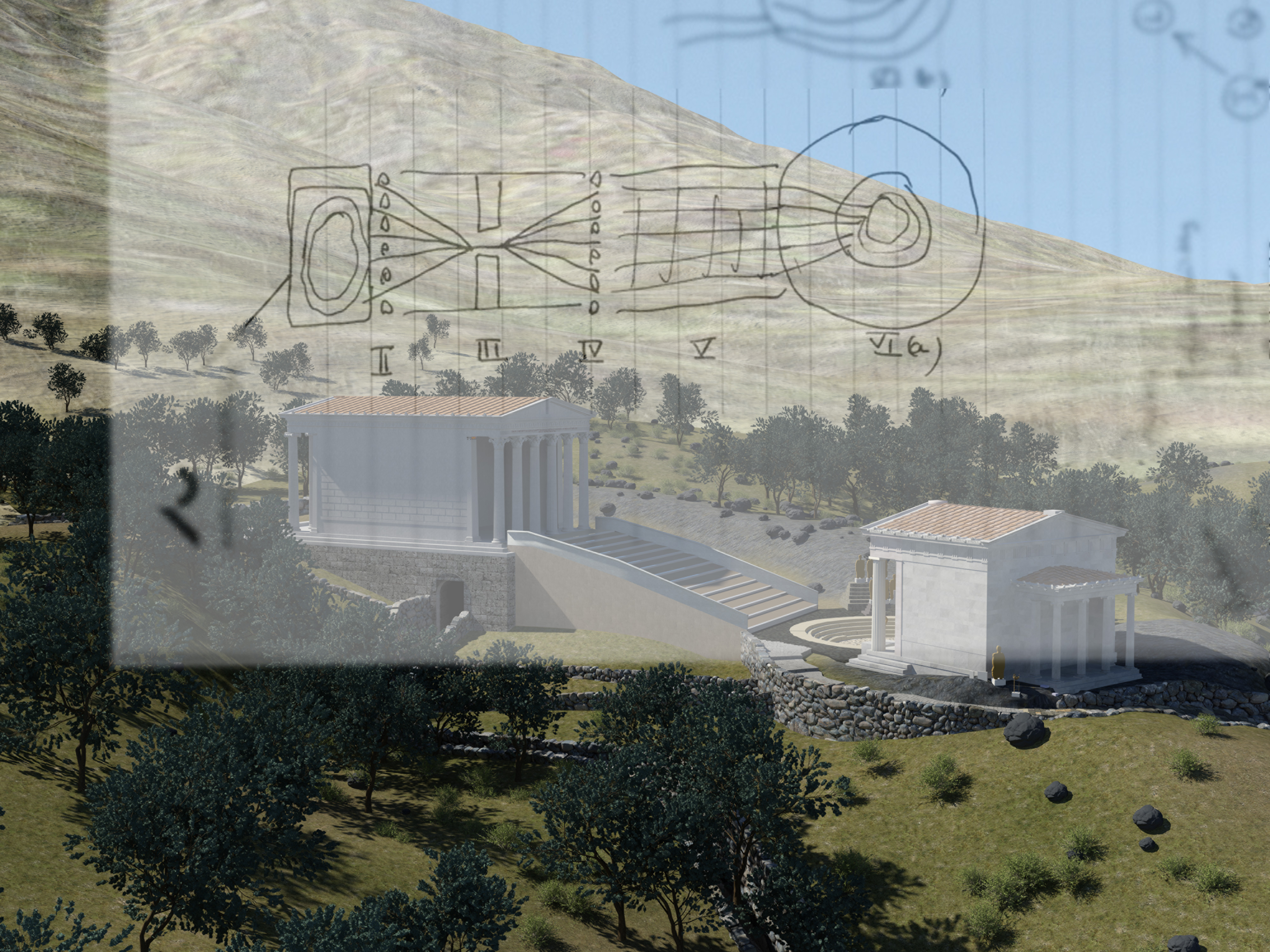The 2021 virtual symposium, “From the Vantage of the Victory: The Sanctuary of the Great Gods and Island of Samothrace” will take place on April 15-16, via Zoom (free to all attendees, registration required). The event, sponsored by the National Endowment for the Humanities (NEH) and the Michael C. Carlos Museum (Emory University), features speakers from various institutions and fields who have worked on the American Excavations Samothrace project. Several staff members of the Emory Center for Digital Scholarship (ECDS) will present their work on April 16, “Session 3: Visualizing Sanctuary and Island.” Below, ECDS Visual Information Specialist Arya Basu briefly describes and includes videos of his in-progress work on agent-based modeling of Samothrace’s Sanctuary of the Great Gods.
For the symposium event flyer and free registration link, please visit the Samothrace project website.
In the summer of 2016, under Dr. Bonna Wescoat (Director of American Excavations Samothrace), I helped create five walkthrough animations depicting the Sanctuary of the Great Gods on the remote island Samothrace in Greece circa 200 B.C. Since then, I have strived to visualize the ancient sanctuary using several approaches.
One of my recent endeavors has been to investigate the maximum number of initiates that the sanctuary could host simultaneously. The Samothracian initiation had a cult following, but, to the best of our current knowledge, no description of the initiation has ever been documented. Considering the scarcity of data, I chose to deploy agent-based modeling (ABM) to assess the number of initiates that the sanctuary could hold. Eric Bonabeau writes that in ABM, “a system is modeled as a collection of autonomous decision-making entities called agents. Each agent individually assesses its situation and makes decisions on the basis of a set of rules.” Using each agent’s ability to sense and actuate, I successfully turned the sanctuary entrance into a maze-like environment with the initiate agents following a leader-agent. The initiate agents try to follow the leader-agent, while the latter uses a simple way-points system to navigate the sanctuary.

Some of the navigational strategies in and around the sanctuary entrance have been conceived on paper as indicated above. The architectural plans sourced from the archeological excavations at the site indicate that some of the design elements of the sanctuary entrance may have been planned to act as a natural crowd control mechanism.
These videos (see below) show a top down perspective of the Propylon entrance to the Samothracian sanctuary with the Leader-agent highlighted in pink and the Initiate-agents highlighted in cyan. The variation between the two is that one contains 10 initiate-agents and the other contains a denser group of 40 initiate-agents.
The work on this interactive build is still in progress. The images/video included here may not match the final representation; we hope to share more updates on the blog as the project develops further. You can also check out an update on my use of ABM to create an interactive build of the slave vessel L’Aurore (an ongoing project for SlaveVoyages.org).
To read more about the Samothrace project, please visit samothrace.emory.edu or check out the Samothrace tag on our blog.
